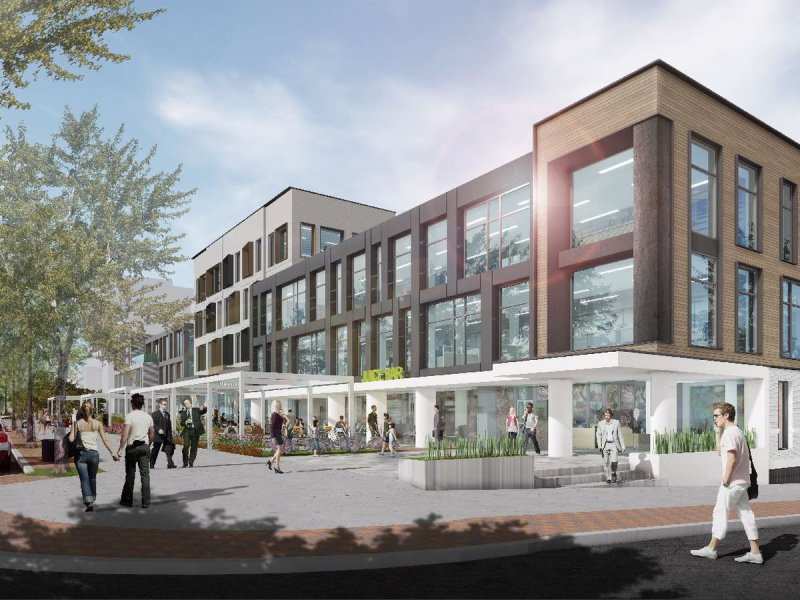Mixed use development is starting to make its way into Whitehall, but allowing taller, denser structures that can provide a mix of uses is environmentally friendly and economically attractive. By reducing the amount of land that is used for development, the natural environment is less disturbed, buildings can use energy more efficiently, and tax bases can increase with the addition of office and property tax for the extra floors created in a mixed use development.
(Image Source: Curbed Atlanta)
Idea
Incentivizing mixed-use development can lead to a variety of benefits for a community. Densifying commercial, office, and residential space generates more tax revenues than a single-story, single-use structure, and allows space for more residents and workers. Mixed-use development also requires less energy, materials, and surface area for construction versus single-use development. Mixed-use development can also have benefits for transportation; taller buildings generally calm traffic by making drivers feel that they are closer to the edge of the street and increased density increases access to effective transit lines on Broad and Main Streets.
Goal
Increase mixed-use developments along Broad and Main Streets.
Objectives
- Update Zoning Code Section 1124.10 Whitehall Commercial Overlay District to incentivize the construction of mixed-use developments on Broad and Main Streets.
- Actively work through economic development to increase density along said corridors.
Examples
There are many examples of lower scale mixed-use neighborhoods in Central Ohio, including Dublin's Bridge Park and Downtown Westerville.
Connection to Other Plans
This idea potentially addresses the following elements of the MORPC Regional Sustainability Agenda:
| Element | Description | Rationale |
|---|---|---|
| 1.1 | Reduce vehicle miles traveled (VMT). | Increasing density of residences, jobs, and commercial activity would reduce the need for people to travel by vehicle to their destination. |
| 1.2 | Reduce the percentage of commuters driving alone and increase the percentage of commuters riding transit, biking, or walking. | See rationale for Element 1.1. |
| 1.6 | Reduce per capita energy consumption across all sectors. | Increases in density and efficiency will reduce energy loads used per capita. |
| 2.1 | Reduce emissions to meet federal air quality standards. | See rationale for Element 1.1. |
| 2.4 | Minimize greenfield development and promote infill and redevelopment. | Mixed-use development would primarily take place along the major corridors of Whitehall, where parcels have mostly been previously developed. Redeveloping these parcels for a higher use would promote infill practices. |
